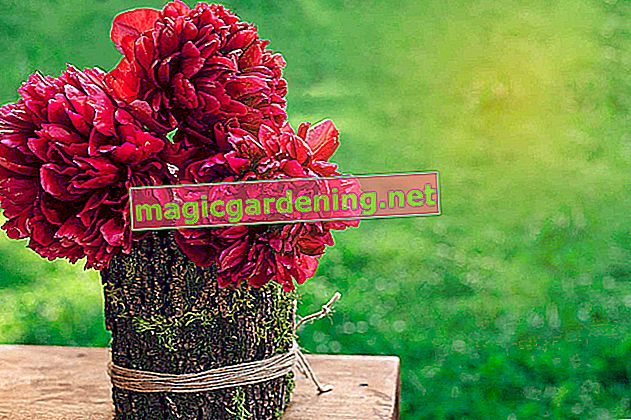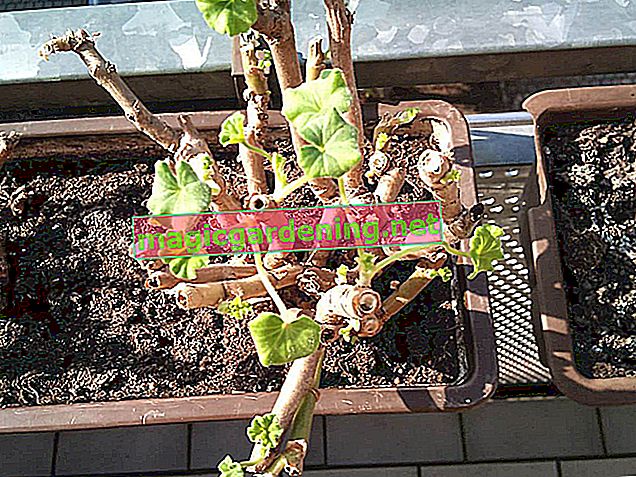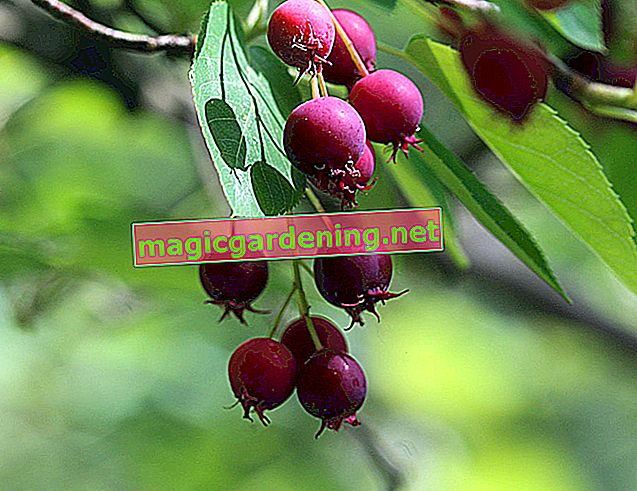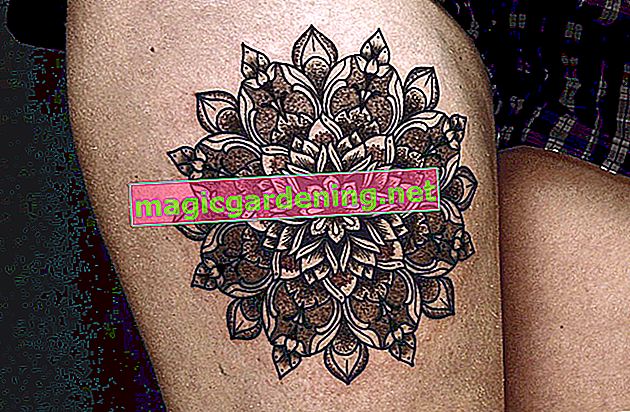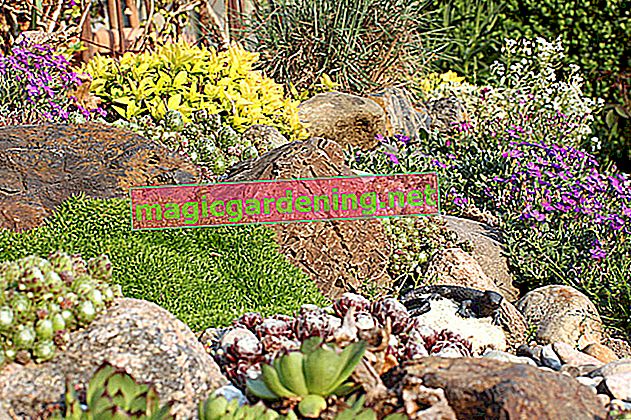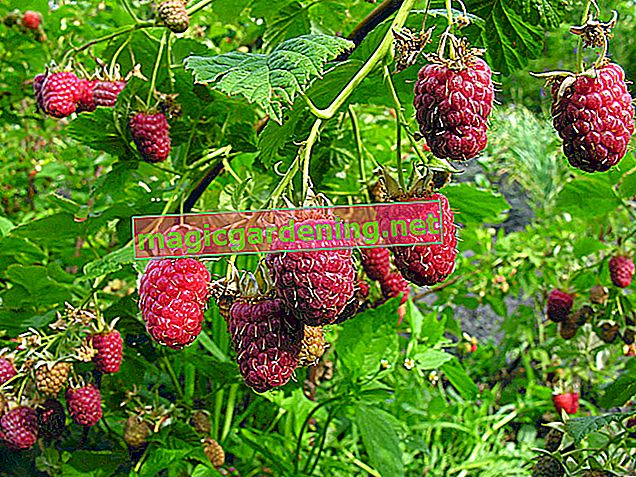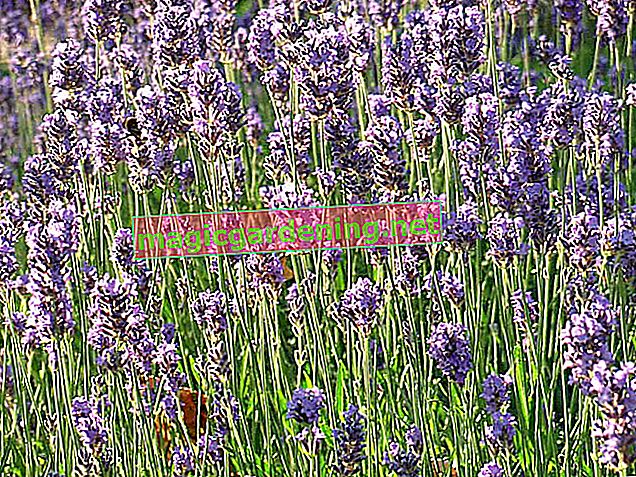
origin
The hussar buttons, botanically Sanvitalia, form their own genus with 7 different species, of which we in Central Europe mainly the Sanvitalia procumbens, the so-called miniature sunflower, is cultivated. They and their conspecifics originally come from the Central American area, especially from Mexico, where they mainly settle at higher altitudes around 1000 m. The distribution area of the Sanvitalia procumbens also extends a little beyond the southern border of Mexico to Guatemala and Costa Rica. In their home areas, hussar buttons are considered more of a weed.
also read
- Hussar buttons require little maintenance
- How to multiply hussar buttons
- The right location for hussar buttons
Other Sanvitalia species are also found in areas further north, in the southern and western parts of the United States such as Texas, New Mexico, Arizona, and California.
According to their warm and sunny origin, hussar buttons are best cultivated in this country under warm, sunny conditions. Outdoor cultivation is also possible without any problems, as it is an annual plant anyway.
Origin at a glance:
- The 7 types of hussar buttons come from Central America and the South and West United States
- Correspondingly warm, sunny original habitat
- Can be cultivated outdoors without any problems in this country (annual anyway)
growth
The different species of the Sanvitalia genus either grow as perennials or are annual. However, the persistent species do not have a particularly long lifespan. The most common type of hussar button in this country, the Sanvitalia procumbens, also popularly called miniature sunflower, is an annual species. It therefore dies off in winter.
Their growth is characterized by a prostrate, richly branched habit. The Sanvitalia procumbens forms a dense cushion of plants with slightly overhanging shoots. Therefore it is also a popular ground cover variant. Overall, the plant reaches a height of 15 to 30 centimeters.
Growth characteristics in brief:
- In this country mostly cultivated species annual
- Decumbent, branched growth
- Forms dense plant cushion, therefore suitable for ground cover
- Height 15-30 cm
leaves
The leaves of the hussar's button sit opposite to each other and on short petioles on the shoots. Their shape is elongated oval to lanceolate and pointed at the front, outside they are entire. In terms of color, they are a rich, deep green.
blossoms
The flowers are the most beautiful ornament of the hussar button and also give its name to the trivial name miniature sunflower. Indeed, with their bright sun-yellow color, their brownish-black stamp and their plate-like, open appearance, they are reminiscent of the great sun worshipers. In addition, with their radiantly fanned out petals they also look like little suns. Above all, they stand out very attractively from the lush green foliage and this gives them their cheerful character. The flowers are cup-shaped and end up on the stems.
Flower characteristics in brief:
- Small, sun-yellow cup-shaped flowers
- Somewhat reminiscent of sunflower blossoms
- Wide open, plate-shaped appearance
When is the flowering time?
You can enjoy the sun-yellow flowers for a long time: The flowers open from June and usually persist into October. Therefore, they also offer valuable color decorations for the autumn garden, especially for summer nostalgics. To keep the flowering time as lush and attractive as possible, you should clean the hussar button regularly.
fruit
In autumn, the flowers develop into small, brownish closing fruits.
Which location is suitable?
According to its origin, the Hussar Button prefers a warm, sunny place. In the balcony box and bucket culture, as well as planted out in the open, you should give it a location that gets plenty of sun and can also be stored. A hussar's button also feels very comfortable in the rock garden, for example, where stones can serve as a cozy heat accumulator. But it also gets along quite well in partial shade, where it will only develop fewer flowers. The hussar button is pleasingly insensitive to wind and rain.
If you want to cultivate the Sanvitalia procumbens in a planting arrangement in the tub, it is advisable to plant it on the edge. This shows off its slightly overhanging shoots. In addition, due to its low growth, it forms a structurally attractive border.
To note:
- Hussar button needs a sunny, warm location
- But also copes with partial shade
- Recommended: place in the rock garden
- Plant in the tub arrangement on the edge
Continue reading
What soil does the plant need?
When it comes to planting substrate, the hussar button is even more frugal than the location. It does not have an excessively high nutritional requirement and does not require any other special conditions such as particularly high or low pH values. You can use commercially available potting soil for planting in the tub or balcony box, which is either a bit more humus-rich from the start or which you enrich with a little compost. In addition, the substrate should have a certain proportion of sand - there should be good permeability in order to avoid waterlogging.
This is all the more important when planting outdoors if the substrate is rather heavy and loamy. If necessary, work under some coarser gravel into the soil bed.
To note:
- Hussar buttons overall quite undemanding in terms of substrate
- Relatively high nutrient requirements - but a little compost in commercially available potting soil is sufficient
- Work in drainange made of sand or gravel in the bucket as well as in the field
Pour hussar's head
You should provide the hussar button regularly and very thoroughly with water. Especially if you keep it in the bucket, the substrate must not dry out completely. When there are longer hot dry phases in summer, it is essential to reach for the watering can every day. However, waterlogging should be avoided - so do not water when the substrate is still wet or there is even water in the saucer.
In the open air, of course, the need for water is not quite as acute. But even here, especially in summer, you should make sure that the hussar button does not have to suffer thirst.
Casting practice in brief:
- Water regularly and relatively abundantly, especially when growing in a bucket
- Less urgent outdoors, especially in summer dry phases
- Avoid waterlogging
Fertilize hussar buttons properly
Fertilizing is not absolutely necessary for the not particularly hungry hussar button. In order to keep it in good shape and to keep the flowering abundant, regular cleaning is usually sufficient, which saves the plant from caring for dying parts of the plant. If you want, you can help with the balcony box culture over the summer months with a little liquid fertilizer. However, a time interval of around 2 to 3 weeks should be observed.
Hussar's head in a pot
On the one hand, hussar buttons are very suitable as ground cover due to their low, cushion-forming growth. On the other hand, they can also be kept wonderfully in the tub or in the balcony box - either alone or as an accompaniment in a larger planting arrangement. The latter is particularly possible due to the frugality of the hussar button on the substrate. In an arrangement with several plants in a large tub, the hussar button is particularly suitable as a low border planting. It gracefully wrestles other, higher ornamental plants with its dense, green foliage and summer carpet of flowers.
Due to its overhanging growth, planting in a traffic light arrangement together with other cascading balcony plants such as hanging petunias is recommended.
The place where the bucket is placed or hung should of course be sunny and warm. South-facing terraces or balconies are ideal.
To note:
- Hussar buttons are not only suitable for ground cover, but also well suited for pots and balcony boxes
- Especially as an accompaniment to large planting arrangements
- Also great for traffic light arrangements together with other cascading plants
Hardy
The Sanvitalia procumbens is an annual plant - so the question of winter hardiness does not even arise with it. It dies in autumn and has to be replanted or sown again and again in spring, if desired. Other species in the genus are perennial, but difficult to get commercially. The UK network is most likely to have opportunities.
Continue reading
Overwinter
The overwintering of a Sanvitalia procumbens plant is therefore not possible in view of its annual nature. You can of course collect the seeds of your specimen in autumn and store them over the winter. In the following early spring these can then be sown and brought forward.
Continue reading
Increase hussar buttons
The propagation of a hussar button takes place exclusively through seed cultivation. You can get seeds either by remembering to collect them from the ripe fruits in good time in autumn or by purchasing them from specialist shops. You can store seeds you have collected yourself in a cool, dry place over the winter.
You can sow from the end of February. Put the seeds in a planting bowl with a peat-sand mixture or potting soil and place it in a light place. The ambient temperature does not have to be excessively high, around 18 ° C is ideal. For an evenly moist and protected microclimate, cover the planter with a film, a mini greenhouse (€ 6.96 on Amazon *) is even better. The seedlings should show up after about 1 to 2 weeks.
You continue to cultivate these on the windowsill. The young plants can be planted out from around May, when the ice saints are over.
Seed cultivation at a glance:
- Harvest seeds yourself from ripe fruits in autumn or buy them in specialist shops
- Store self-collected seeds in a cool, dry place over the winter
- Sow from the end of February
- Germination within 1-2 weeks under foil or mini greenhouse cover, temperature approx. 18 ° C
- Pre-cultivation on windowsill
- Transplant in May after the last danger of frost
Continue reading
Diseases
In terms of diseases and pest infestation, the hussar button hardly gives hobby gardeners any cause for concern. It is practically not afflicted by ailments, which makes its grateful, carefree character perfect. Even snails show little interest in its leaf green. The most that can affect the plant is excessive waterlogging. If you water too much or forget for a long time to empty fully rained saucers, it can lead to root rot or even to the colonization of fungi, such as the botrytis fungus. However, that rarely happens.
Is the hussar's head poisonous?
As good-natured and trusting as the hussar button appears, so is it in its essence. It does not contain any toxins and is therefore completely safe for planting in households with small children and curious cats or dogs.
Continue reading
sorts
Many different cultivars of the species Sanvitalia procumbens are offered in the plant trade. These differ less in the color of the flowers than in their growth. After all, the cheerful, sunny yellow of the flowers is also one of the most characteristic features of the hussar button. Nevertheless, there are a few varieties with a slightly darker, orange tint.
Sanvitalia procumbens 'Gold Carpet'
This variety shows hussar button-typical sun-yellow, small and very numerous flowers. A special feature is that they show up a little earlier than with other varieties, in good weather as early as May.
As its name suggests, the variety is characterized by a dense, creeping growth in which a cushioned carpet of plants develops - over the summer with a wonderful yellow pile. Therefore it is very suitable as a ground cover. Their height is around 15 to 20 centimeters.
Sanvitalia procumbens 'Starbini'
The S. p. Starbini has bright yellow flowers that appear in June and last through October. In this respect, it offers the typically sunny and happy sight of the hussar buttons.
Characteristic of this variety is its strongly overhanging growth, which is why it is very suitable for hanging plants.
Sanvitalia procumbens 'Superbini'
The flowers of the S. p. Variety also shine in a beautiful sunny yellow. Superbini. They open from June and stay well into autumn if they are regularly cleared of dead flowers and old branches.
Unlike most other varieties, this variety grows upright and bushy. It can therefore be used well for the border planting in beds and borders.
Sanvitalia procumbens 'Mandarin'
The name of this variety suggests it: This is a variant whose flowers are rich, indeed tangerine-colored. This gives it a very warm, southern flair. In addition, the flowers here are fringed with tongue. As with most varieties, the flowering period begins in June and continues into October.
The S. p. Mandarin bushy and reaches a height of about 20 to 30 centimeters.
Sanvitalia procumbens 'Plena'
A little attraction at the end: the S. p. Plena has something special on offer and that is double flowers. It may lose its typical mini-sun character as a result, but it looks a bit more artistic and elegant. So it is something for those who can be fascinated by extraordinary flower structures. The flowers appear in June and can also remain until early autumn.
The growth of the S. p. Plena is quite bushy and compact, so it is also well suited for border edging or as a ground cover.

